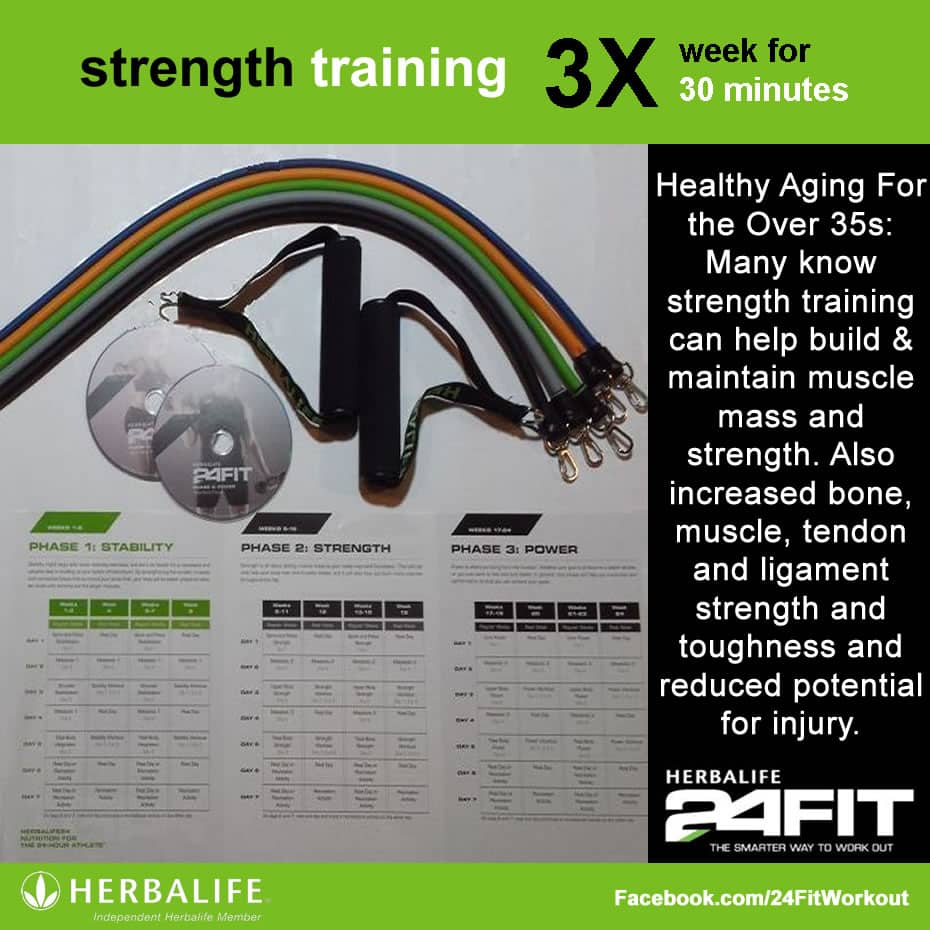Strength training will provide significant functional benefits and improvement in overall health and well-being including increased bone, muscle, tendon and ligament strength and toughness and reduced potential for injury
Over 50s – Don’t even think about Insanity or book your appointment at the physios now! Physios love Insanity it generates so much business for them…
Over 35s – Well how active have you been in the last 10 years before you launch into an intensive workout. See articles on the militarisation of fitness here. “The fitness industry has been hijacked by workout zealots”
Comparing modern man to forebears: “They didn’t go 22-23 hours without moving, then bolt off on heat throbbing run for 45 minutes”. Their bodies were strong and tendons and ligaments hardened by constant movement from a range of activities”. Robert Forster
Healthy Aging How Getting Strong Can Keep You Healthy
Most of us know that strength training (with free weights, weight machines, or resistance bands) can help build and maintain muscle mass and strength. And you can burn more calories per day than with aerobic exercise alone.
Scientific research ( See Harvard research, for example below) shows us the need for weight training as a critical component of every health and fitness program. When you consider that bone density and muscle mass peak for us at age 25, you are never too young or too old to focus on putting more bone and muscle in the “bank” with a smart resistance training program because we are all losing lean body tissue as we age
Joint Stability
Think about it. Strength training makes sense to improve joint mechanics and to protect joints from the normal wear and tear of daily activities and fitness movements. Strength training is the key to assure you can stay healthy enough to keep exercising. Once the joints are protected from injury, we use resistance to create and maintain muscle mass and bone health, but the benefits don’t stop there.
Strength Training Builds More Than Muscles
Strong muscles lead to strong bones. And strong bones can help minimize the risk of fracture due to osteoporosis. A combination of age-related changes, inactivity, and poor nutrition conspire to steal bone mass at the rate of 1% per year after age 40. As bones grow more fragile and susceptible to fracture, they are more likely to break after even a minor fall or a far less obvious stress, such as bending over to tie a shoelace.
Osteoporosis should be a concern for all of us. Eight million women and two million men in the United States have osteoporosis. It is now responsible for more than two million fractures a year, and experts expect that number will rise. Hip fractures are usually the most serious. Six out of 10 people who break a hip never fully regain their former level of independence. Even walking across a room without help may be impossible.
Numerous studies have shown that strength training can play a role in slowing bone loss, and several show it can even build bone. This is tremendously useful to help offset age-related decline in bone mass. Activities that put stress on bones stimulate extra deposits of calcium and nudge bone-forming cells into action. The tugging and pushing on bone that occur during strength training (and weight-bearing aerobic exercise like walking or running) provide the stress. The result is stronger, denser bones.
And strength training has bone benefits beyond those offered by aerobic weight-bearing exercise. It targets bones of the hips, spine, and wrists, which, along with the ribs, are the sites most likely to fracture. What’s more, resistance workouts—particularly those that include moves emphasizing power and balance—enhance strength and stability. That can boost confidence, encourage you to stay active, and reduce fractures by cutting down on falls.
Burn more calories
The increased presence of muscle tissue improves overall metabolic function, especially when at rest. This means that by increasing your lean body mass, through strength training, you can burn more calories per day than with aerobic exercise alone. It is important to learn how to properly implement appropriate strength exercises to avoid injury and plateaus. Basic to all exercise programs is your body needs to function well mechanically to avoid injury while you execute your tailored training plan. Strength training should be organized and planned in advance for best results. It has to be goal specific, simple and most importantly flexible as its content can be modified to meet your rate of progress.
24 Fit DVDS
Three phases and three levels of difficulty so any age, any condition, anyone can build a better body! Address common vulnerabilities of the human body regardless of age or previous activity level. Make your body more resilient to injury, unlike many “insane workouts” which lead to injuries. Periodization training so you need to sequence your training, to develop one aspect of fitness at a time and then use that as a foundation to build the next. And principles which recognise that all exercise is much less effective if rest and recovery periods are not provided.
Thirty years of Robert Forster’s experience is available on a set of 13 24 Fit DVDs, ( note the resistance bands are not included with the DVDs)
Phase 1 – STABILITY
Prepares your body with low-intensity, light-impact training specifically designed to strengthen the muscles that keep joints in their correct, natural positions.
WEEKS 1–8
Spine and Pelvis Stabilization
Shoulder Stabilization
Total Body Integration
Metabolic 1
Phase 2 -STRENGTH
Takes your now properly aligned body and focuses on building muscle with variable low- to high-intensity exercises.
WEEKS 9–16
Spine and Pelvis Strength
Upper Body Strength
Total Body Strength
Metabolic 2
Phase 3 – POWER
Introduces high-intensity exercises to refine your new strength and increase your stamina, speed and efficiency
Core Power
upper Body Power
Total Body Power
metabolic 3
References:
Phase IV Scientific Health & Performance Center, Santa Monica

